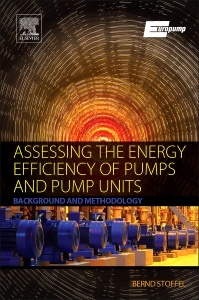Description
Assessing the Energy Efficiency of Pumps and Pump Units
Background and Methodology
Author: Bernd Stoffel em. Dr.-Ing
Language: English
100.44 €
In Print (Delivery period: 14 days).
Add to cart
Publication date: 04-2015
Support: Print on demand
Support: Print on demand
Description
/li>Contents
/li>Comment
/li>
Assessing the Energy Efficiency of Pumps and Pump Units, developed in cooperation with Europump, is the first book available providing the background, methodology, and assessment tools for understanding and calculating energy efficiency for pumps and extended products (pumps+motors+drives). Responding to new EU requirements for pump efficiency, and US DOE exploratory work in setting pump energy efficiency guidelines, this book provides explanation, derivation, and illustration of PA and EPA methods for assessing energy efficiency. It surveys legislation related to pump energy efficiencies, provides background on pump and motor efficiencies, and describes the concept of Energy Efficiency Index (EEI) for circulators and single and multi-pump systems.
About the Author
Preface
Acknowledgments
Abbreviations
List of Abbreviated Subscripts
List of Symbols
Introduction
1. The Role of Pumps for Energy Consumption
and Energy Saving
2. Standardization and Legislation Regarding the Energy Efficiency of Pump Units
3. Overview on Europump Approaches on Assessment of Energy Efficiency
4. Physical and Technical Background of the Efficiency of Pumps
5. Physical and Technical Background of the Electrical Power Input of Pump Units
6. The Role of Manufacturing Tolerances
7. The Concept of the Minimum Efficiency Index (MEI) for Pumps
8. The Concept of the Energy Efficiency Index (EEI) for Circulators and Pump Units
References
Preface
Acknowledgments
Abbreviations
List of Abbreviated Subscripts
List of Symbols
Introduction
1. The Role of Pumps for Energy Consumption
and Energy Saving
2. Standardization and Legislation Regarding the Energy Efficiency of Pump Units
3. Overview on Europump Approaches on Assessment of Energy Efficiency
4. Physical and Technical Background of the Efficiency of Pumps
5. Physical and Technical Background of the Electrical Power Input of Pump Units
6. The Role of Manufacturing Tolerances
7. The Concept of the Minimum Efficiency Index (MEI) for Pumps
8. The Concept of the Energy Efficiency Index (EEI) for Circulators and Pump Units
References
- The first book to cover Europump- sponsored research on energy efficiency in pumps, including coverage of new EU guidelines implemented in January 2015
- Discusses Product Approach (PA) and Extended Product Approach (EPA) to assessing energy efficiency
- Derives and explains the Minimum Efficiency Index (MEI)
© 2024 LAVOISIER S.A.S.




